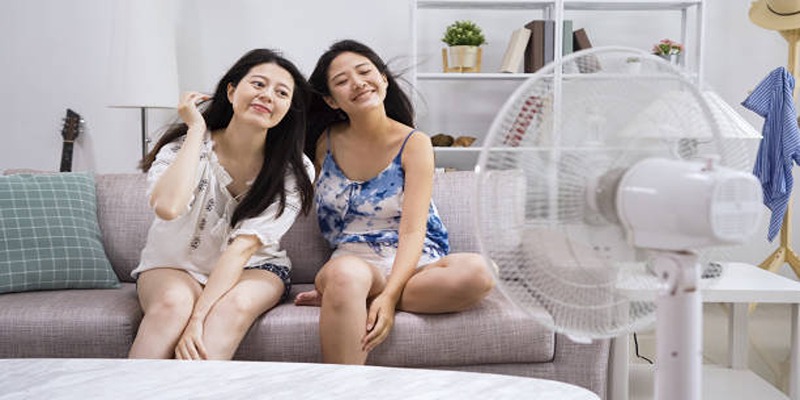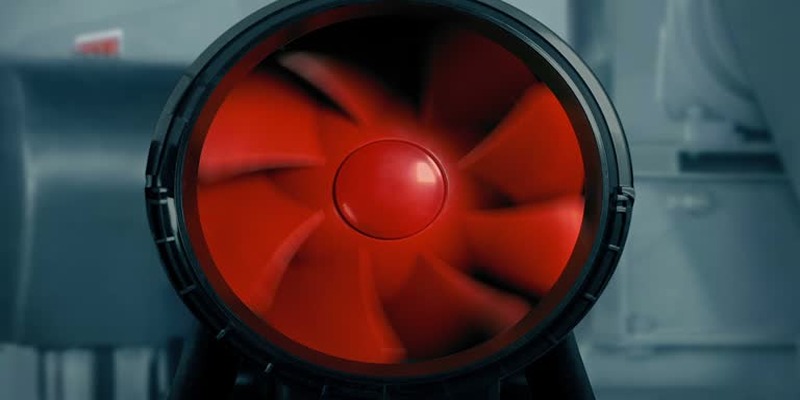Affordable Ways to Stay Cool Without Central Air Conditioning
Keeping cool during hot days can be tough, especially if you don’t have central air conditioning. Thankfully, there are plenty of easy and affordable ways to beat the heat without spending too much money. From simple changes at home to clever tips and tricks, staying comfortable in hot weather doesn’t have to be a struggle. This guide will help you learn the best low-cost methods to keep cool, so you can enjoy the summer without sweating over high energy bills or expensive cooling systems.
Use Fans Strategically

Arrange your fans in such a way that your room is in a position to get adequate air circulation that will make the room cooler. For example, when it was hot in the house, open a window and place a box fan in it to pull in the cooler evening air or directing the fan to blow the hot air out of the room. During summer the blades of the ceiling fans should be rotating from left to right thus causing wind chills and making the room to be cooler.
If you want some more enhanced chilling then you should put a bowl with ice or frozen bottle in front of the fan- this will definitely enhance the circulation of cold air in the room. These you can use smartly so that you do not need to have air conditioning but you are still comfortable.
Install Window AC Units
Window air conditioning units are an excellent option for cooling specific rooms without the expense of central air. These units are typically more energy-efficient than cooling an entire home and can be installed in just a few hours. Make sure to choose the right size unit for the room you’re cooling—an AC unit that’s too small won’t be effective, while one that’s too large can waste energy.
Seal any gaps around the unit with weatherstripping or foam to prevent warm air from sneaking in and to maximize efficiency. While they do require an upfront cost, window AC units are a cost-effective cooling solution for those hot summer days.
Block Out Heat with Curtains and Blinds
Preventing heat from entering your home is one of the easiest ways to keep it cooler. Use blackout curtains or blinds to block out sunlight, especially during the hottest part of the day. Light-colored or reflective window coverings are particularly effective at deflecting solar heat. Close curtains and blinds in rooms that face the sun, and consider investing in thermal curtains for added insulation. This simple step can significantly reduce indoor temperatures and lower your cooling costs.
Utilize Natural Ventilation
Take advantage of natural ventilation by opening windows and doors in the evening when temperatures are cooler. This will allow fresh air to circulate throughout your home, reducing stuffiness and bringing in cool breezes. Strategically placed fans can help pull this fresh air in and push hot air out, creating a comfortable cross-breeze.
In addition to keeping your home cool, natural ventilation can also improve indoor air quality by removing stagnant air and replacing it with fresh outdoor air.
Attic Ventilation
Proper attic ventilation is key to reducing heat buildup in your home. During the summer, attics can become extremely hot, trapping heat that seeps into the living spaces below. To combat this, ensure your attic has adequate ventilation through vents, fans, or attic-specific exhaust systems.
Installing a powered attic fan can help expel hot air, reducing the overall temperature of your home and making it easier to cool. Proper attic ventilation can also help prevent moisture buildup, which can lead to mold growth and other issues.
Take Advantage of Shade
Utilize natural shade around your home to keep it cool. Planting trees or installing awnings can block direct sunlight from hitting windows and walls, reducing indoor heat buildup. If you have outdoor space, consider using shade sails, pergolas, or umbrellas to shield patios and windows.
For a quicker solution, place potted plants outside sunny windows to provide temporary shade. By leveraging the cooling properties of shade, you can maintain a lower indoor temperature without relying heavily on air conditioning.
Reduce Heat-Producing Activities
Simple daily tasks like cooking, doing laundry, and running the dishwasher can generate a significant amount of heat in your home. To avoid adding unnecessary warmth to your living space, try shifting these activities to cooler times of the day.
Cook meals on the grill outside or choose no-cook recipes during hot weather. Hang clothes to dry instead of using a dryer, and run appliances like dishwashers and washing machines at night when temperatures are lower. These small changes can add up and make a noticeable difference in keeping your home cool without central air conditioning.
Insulation
Proper insulation is essential for maintaining a comfortable indoor temperature year-round. During the summer, insulation helps keep hot air out and cool air in, reducing the need for artificial cooling. Check your home's insulation and ensure it meets recommended levels for your climate.
For homes without central air conditioning, consider investing in additional insulation in areas like attics or crawl spaces. This can help prevent heat from seeping into living areas and reduce overall cooling costs.
Stay Hydrated and Dress for the Heat

In addition to making adjustments in your home, it’s important to take care of yourself during hot weather. Stay hydrated by drinking plenty of water throughout the day.
Wear loose-fitting, lightweight clothing made from breathable fabrics like cotton or linen to stay cool and comfortable. If you have outdoor plans, try to schedule activities during cooler parts of the day and take breaks in shaded areas when possible.
Ductless split system
Another alternative to central air conditioning is a ductless split system. Unlike traditional central AC, this type of system does not require ductwork and can be installed in individual rooms or zones throughout the home.
Ductless systems are more energy-efficient than window units and can provide targeted cooling to specific areas. The upfront cost may be higher than other options, but the long-term savings on energy bills make it a worthwhile investment.
Conclusion
While central air conditioning is a popular choice for keeping homes cool, there are many alternatives that can be just as effective at a fraction of the cost. By utilizing these tips and techniques, you can create a comfortable living space without relying solely on artificial cooling methods. As an added bonus, these solutions can also help reduce energy consumption and lower your utility bills. Try implementing one or more of these methods in your home this summer and see the difference it can make in keeping your space cool and comfortable.









